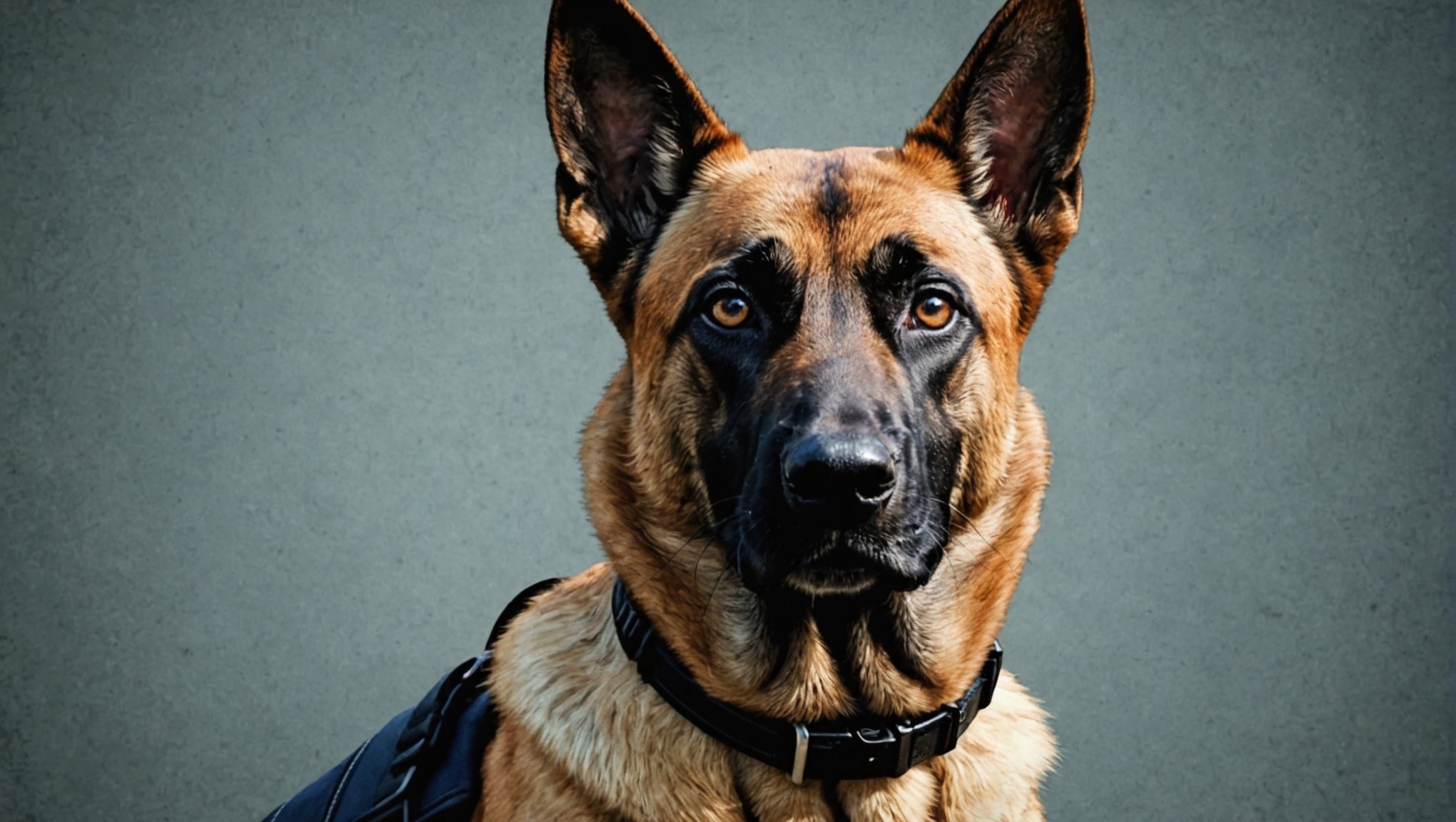As dog enthusiasts or individuals interested in police work, you have probably encountered the Belgian Malinois, one of the most distinguished working dog breeds. This breed’s high level of fitness, agility, and work ethic make it a top choice for law enforcement agencies worldwide. But what goes into ensuring these dogs are in prime condition for their critical roles? This article delves into the processes of assessing the fitness level of a Belgian Malinois for police work.
Understanding the Belgian Malinois Breed
Before diving into the assessment process, it’s essential to understand the Belgian Malinois’ strengths and traits. Hailing from the Belgian city of Malines, the Belgian Malinois is known for its working instinct, energy, and intelligence. These dogs are highly trainable and adaptable, making them fit for various tasks, including search and rescue, drug detection, and personal protection.
Cela peut vous intéresser : How can you encourage a Finnish Spitz with a strong prey drive to focus on training?
However, the physical and mental demands of police work mean the average Belgian Malinois may not suffice. Selecting the right dog for the job involves examining the breed’s fitness level, temperament, and training aptitude.
The Importance of Physical Fitness in Working Dogs
The physical fitness of a Belgian Malinois is a key factor in determining its suitability for police work. Police dogs undergo strenuous tasks that require high energy levels, strength, and endurance. Therefore, it is crucial to assess the dog’s physical fitness regularly to ensure it is in top shape for its duties.
Cela peut vous intéresser : Transform your dog's meals with fresh, healthy food choices
Routine examinations involve testing the dog’s body condition, endurance, agility, and overall health. In addition to visual inspections, handlers may use tools like agility courses or treadmills to gauge the dog’s fitness level. Regular veterinary check-ups are also necessary to identify potential health issues that could affect the dog’s performance.
These evaluations are not only for selection purposes but also to ensure the dogs maintain a high level of fitness throughout their careers. Regular exercise routines and balanced nutrition also play a significant role in sustaining a Belgian Malinois’ fitness level.
Assessing the Mental Fitness of Belgian Malinois
Beyond physical fitness, a Belgian Malinois for police work must exhibit a certain level of mental fitness. This mental fitness includes the dog’s ability to follow commands, its adaptability to different situations, and its ability to handle stress well.
Training a Belgian Malinois for police work starts with basic obedience training, where the dog learns to respond to commands like sit, stay, and come. Once the fundamentals are mastered, the training becomes more specific to the tasks the dog will be performing, such as scent detection or suspect apprehension.
Another major aspect of mental fitness is the dog’s temperament. A Belgian Malinois for police work should exhibit confidence, alertness, and an eagerness to work. These dogs should also have the will to please their handlers, making them easier to train and work with.
The Role of the Handler in Training and Assessment
The handler plays a significant role in the training and assessment of a Belgian Malinois for police work. An effective handler will establish a strong bond with the dog, fostering trust and mutual respect. This relationship is critical for training, as the dog must trust the handler’s commands and guidance.
Handlers also play a crucial role in maintaining the dog’s physical and mental health. They must ensure the dog gets regular exercise, balanced nutrition, and adequate rest. The handler’s observations and insights are also valuable during assessments, as they can provide firsthand information about the dog’s behavior, performance, and overall well-being.
Utilizing Scientific Data in Dog Fitness Assessment
In recent years, scientific research has become an invaluable tool in assessing the fitness level of working dogs. Studies from resources like PubMed provide hundreds of useful insights into the physiology, behavior, and health of working dogs like the Belgian Malinois.
Such research helps improve the selection and training of these dogs. For example, studies on canine genetics provide information about potential health issues specific to the Belgian Malinois breed. Similarly, research on dog behavior and cognition can inform more effective training methods.
While empirical observations and traditional training methods are still valid and widely used, scientific data adds another level of understanding. It helps handlers and trainers make more informed decisions about a dog’s suitability for police work and design better training regimes, contributing to the success and welfare of these remarkable dogs.
The assessment of a Belgian Malinois for police work goes beyond physical prowess. It involves a comprehensive evaluation of the dog’s physical and mental fitness, the strength of its bond with its handler, and its ability to perform under pressure. This process is essential to ensure that the dogs selected for these roles are not only capable of the tasks at hand but also that they thrive in their work, contributing positively to our society.
Integrating Modern Technology in Dog Fitness Assessment
In recent years, the application of modern technology has revolutionized the process of assessing the fitness level of Belgian Malinois for police work. Advanced tools such as canine fitness trackers and orthopedic disease detectors are increasingly being used to monitor the dog’s health and performance.
These tools provide valuable data on the dog’s heart rate, breathing rate, and body temperature, among other vital health indicators. They also monitor the dog’s activity level, sleep quality, and calorie expenditure, all of which can be indicative of the dog’s overall fitness level. Additionally, tools like orthopedic disease detectors help identify early signs of joint and bone issues that are common in working dogs, such as German Shepherds and Belgian Malinois.
The integration of technology in the fitness assessment process bolsters the accuracy of evaluations and enables timely interventions. That not only helps maintain the optimal performance of these dogs but also significantly improves their welfare.
Incorporating Canine Fitness Programs
Canine fitness programs play a vital role in maintaining the health and fitness of Belgian Malinois for police work. Such programs are designed to meet the unique fitness needs of working dogs, focusing on strength, endurance, agility, and flexibility.
For instance, the Northeast Conditioning program is a well-known fitness program for working dogs. It emphasizes various exercises that mimic the physical demands of their job, ensuring the dogs are well-prepared for their roles. These programs also stress injury prevention and recovery, which are crucial for the dogs’ long-term health and career longevity.
The success of a canine fitness program largely depends on its regular implementation and the consistency of the dog’s routine. Regular exercise, coupled with a balanced diet, ensures that the Belgian Malinois maintains its peak performance and stays fit for its demanding role.
Conclusion
The fitness assessment of a Belgian Malinois for police work is a multifaceted process. It involves a comprehensive evaluation of the dog’s physical and mental strength, the robustness of its relationship with the handler, and its ability to perform under intense pressure. The integration of modern technology and canine fitness programs have added a new dimension to these assessments, enhancing their accuracy and effectiveness.
Being privy to this information is vital for those involved in police work and anyone interested in dog training. Understanding this process helps us appreciate the effort and dedication put into preparing these awe-inspiring dogs for their vital roles in law enforcement. It also underscores the importance of adopting a comprehensive and systematic approach in selecting and training these dogs.
The Belgian Malinois breed stands as a testament to the incredible feats dogs can achieve with the right training and care. So, the next time you see a Malinois dutifully following his handler’s commands, remember the rigorous training and assessment that has played a part in making it the remarkable police dog it is. And as we continue to innovate and improve these processes, we can look forward to even higher standards of performance from these exceptional canines.
















